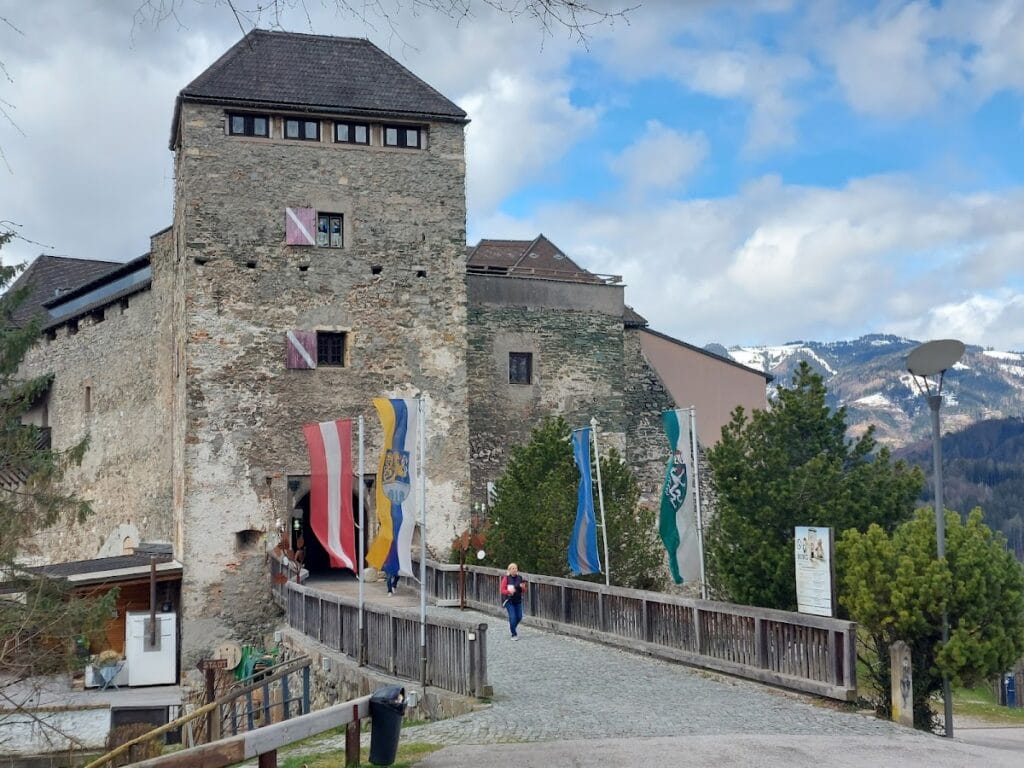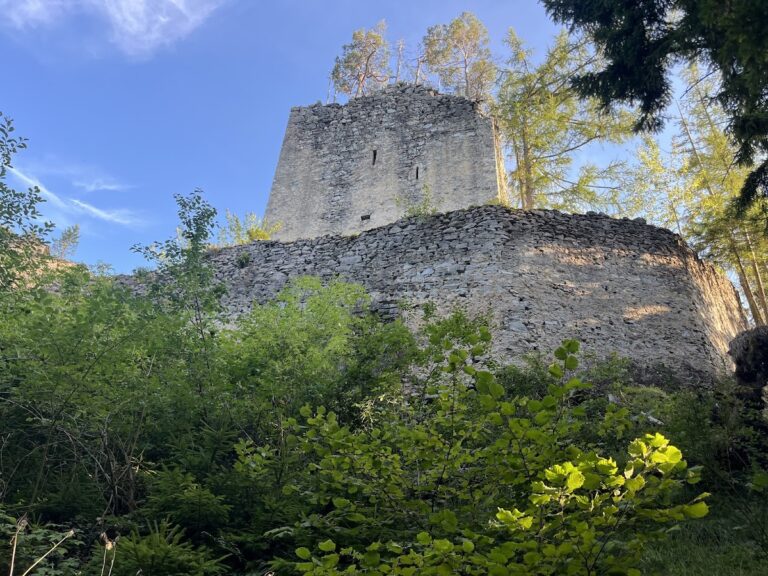Burg Oberkapfenberg: A Medieval and Renaissance Fortress in Austria
Visitor Information
Google Rating: 4.5
Popularity: Medium
Official Website: www.burg-oberkapfenberg.at
Country: Austria
Civilization: Medieval European
Site type: Military
Remains: Castle
History
Burg Oberkapfenberg is a medieval fortress situated on a hill above the town of Kapfenberg in Austria. Its early origins trace back to the 12th century when it was first recorded in 1173 under the name “Burg Chaffenberch,” reflecting its initial role as a lookout stronghold constructed during the Middle Ages.
In the 13th century, the castle underwent significant transformation under the Counts of Stubenberg, a noble family who served as ministeriales—unfree knights obligated to serve higher lords—in Styria. They expanded Burg Oberkapfenberg into a prominent residential and administrative center, solidifying its stature within the region. The castle played a role in local power struggles; notably, after Friedrich von Stubenberg became involved in a conspiracy, forces loyal to Duke Albert I of Habsburg occupied the fortress in 1292/1294. Later, the castle fell into the hands of Hungarian troops led by King Matthias Corvinus, who maintained control until 1491.
During times of increased Ottoman (Turkish) incursions, the castle functioned as a lookout post to warn the surrounding area of approaching threats. Responding to evolving military needs, in 1541 Wolf von Stubenberg commissioned the Italian architect Antonio Balin de Comose to convert the existing stronghold into a Renaissance-style fortress, a substantial rebuilding project completed by 1550.
In the 18th century, the Stubenberg family elevated their status to counts and relocated to a palace in Vienna in 1739, leaving Burg Oberkapfenberg abandoned. The castle’s decline accelerated under Emperor Joseph II, who ordered the removal of its roofs, hastening its decay. Mid-20th century restoration efforts began when Count Franz von Stubenberg sought to renovate the structure for use as a hotel, but financial difficulties led to the project’s collapse by 1985, causing further neglect.
In 1992, the municipality of Kapfenberg acquired the castle and formed an association dedicated to its restoration. By 1994, parts of the site reopened for hospitality services and cultural events. Since 2012, archaeological discoveries from a nearby landslide area called “Stubenberg’s Kitchen” have been exhibited, showcasing artifacts such as pottery, animal bone fragments, and children’s toys. Today, the castle also hosts one of Austria’s largest medieval festivals, the Ritterfest, held annually in June.
Remains
Burg Oberkapfenberg occupies a strategic hilltop at 592 meters above sea level northeast of Bruck an der Mur. Its layout includes distinct structures typical of medieval fortifications combined with Renaissance modifications from the mid-16th century. The castle’s construction reflects multiple building phases, with stone structures oriented around a central courtyard, or Burghof.
Beneath the Loreto Chapel, vestiges of the original 12th-century construction—known historically as Burg Chaffenberch—still exist. These remain as parts of the upper residential house, attesting to the earliest medieval phase of the castle. A drawbridge, indicated on historical plans but no longer extant, once provided controlled access to the inner grounds. The site also retains a stone spiral staircase, documented as still standing in the late 19th century, serving as a vertical route within the fortress.
The castle features a zwinger, an outer ward designed as a narrow defensive passage between two walls, equipped with stairs descending to lower levels. The main gate complex consists of vaulted passages with overhead vaulted corridors, offering multiple layers of protection. The gate architecture includes offset gates—a design where gates are arranged in a staggered manner to hinder attackers—and a chamber intended for the gatekeeper.
The Renaissance-era transformation, commissioned by Wolf von Stubenberg and guided by Italian architect Antonio Balin de Comose, introduced significant structural changes completed around 1550. These adaptations likely improved defensive capabilities consistent with Renaissance military architecture and altered some original medieval forms.
Following abandonment in the 18th century, the castle fell into ruin, exacerbated by the deliberate removal of its roofs by imperial order. Partial restoration began in the 20th century, with the integration of a restaurant and hotel facilities within the preserved parts of the ruins.
Recent archaeological excavations, triggered by a landslide in 2011 near the so-called “Stubenberg’s Kitchen,” uncovered various artifacts including pottery shards, bone fragments, and children’s toys. These finds are exhibited on-site, offering insight into the daily life and material culture associated with the castle and its occupants. The castle also houses displays of historic weaponry, torture devices, and themed presentations involving crusaders and alchemists, reflecting its layered historical narrative.







